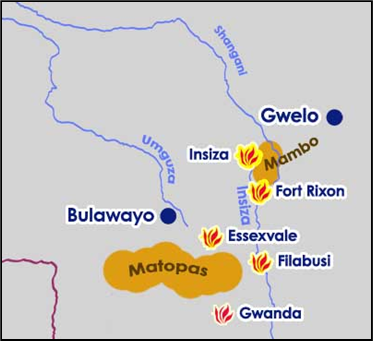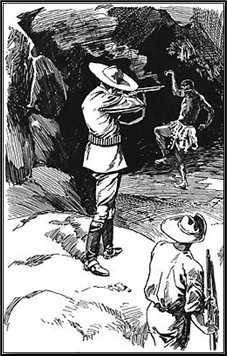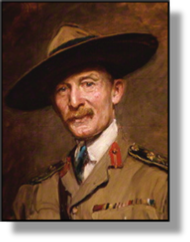


xxxxxA serious
uprising against the rule of the British South Africa Company
broke out in Rhodesia (Matabeleland and Mashonaland) in March 1896, soon after the failure
of the Jameson Raid into the Transvaal. The Matabele and Shona
people blamed the white settlers for the loss of their traditional
way of life and their valuable grazing land, and their spiritual
leader Mlimo held them responsible for the on-
THE SECOND MATABELE WAR
1896 -
Acknowledgements
Map (South
Africa): licensed under Creative Commons – www.thefull
wiki.org/Second_Matabele_War. Baden-
xxxxxIt was
in March 1896, soon after the British
suffered the humiliation of the disastrous Jameson Raid upon the
Transvaal, that a serious uprising broke out in Rhodesia (the
combined areas of Matabeleland and Mashonaland). Discontent among
the native population had long been growing. Rule by the British
South Africa Company, imposed at the end of the First Matabele War
of 1893, had
denied them their traditional way of life. The nation had conceded
defeat in 1894, following the death of their king Lobengula, but its
army had been left largely intact. And the indemnity imposed by the
Company -
xxxxxThe
withdrawal of the white police force earlier in the year to
accompany Jameson on his ill-
 xxxxxThe conflict that
followed, The Second Matabele War -
xxxxxThe conflict that
followed, The Second Matabele War -
 xxxxxConditions within Bulawayo
were desperate. In addition to the men, some one thousand women and
children were crammed into the city. However, fortunately for the
settlers, the Ndebele had not cut the telegraph wires to Mafeking,
on the Bechuanaland border, so help could be sought. A number of
relief columns were organised, and two of these reached Bulawayo in
May, one from Salisbury, led by Cecil Rhodes, and the other from
Kimberley 600 miles to the north. After some fighting close to the
city, the Matabele (or Ndebele), some 50,000 in number, took to
their strongholds in the Matabo Hills, and it was in this rugged
terrain that the fiercest fighting took place, the maxim machine gun
again proving the decisive factor. The final break through for the
settlers came when a Zulu informer told them of the whereabouts of
the Matabele medicine man Mlimo. Two scouts, sent out to hunt him
down, found him in his sacred cave, and shot him dead during his
dance of immunity (drawing by Baden-
xxxxxConditions within Bulawayo
were desperate. In addition to the men, some one thousand women and
children were crammed into the city. However, fortunately for the
settlers, the Ndebele had not cut the telegraph wires to Mafeking,
on the Bechuanaland border, so help could be sought. A number of
relief columns were organised, and two of these reached Bulawayo in
May, one from Salisbury, led by Cecil Rhodes, and the other from
Kimberley 600 miles to the north. After some fighting close to the
city, the Matabele (or Ndebele), some 50,000 in number, took to
their strongholds in the Matabo Hills, and it was in this rugged
terrain that the fiercest fighting took place, the maxim machine gun
again proving the decisive factor. The final break through for the
settlers came when a Zulu informer told them of the whereabouts of
the Matabele medicine man Mlimo. Two scouts, sent out to hunt him
down, found him in his sacred cave, and shot him dead during his
dance of immunity (drawing by Baden-
xxxxxThe
British South Africa Company resumed its control of the country
until 1924, when the British colonial office became responsible for
the territory. In October 1964 the northern region became the
independent nation of Zambia, but in 1965 a white-

xxxxxIncidentally, it was while taking part in the patrols of the
Bulawayo Field Force that the soldier Robert
Baden-
Vc-


